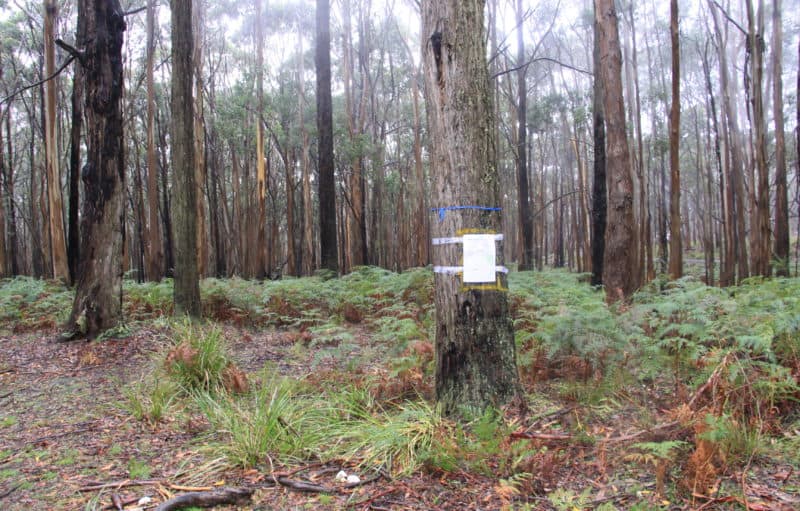PARK WATCH June 2020 |
This July 2020 marks ten years since the formal declaration of the last major addition to the national parks estate in Victoria. Executive Director Matt Ruchel reflects on the legacy.
After almost two decades of work by VNPA, and a four-year investigation by the Victorian Environmental Assessment Council (VEAC), the Brumby ALP government created this extensive system of parks along the Murray, Goulburn and Ovens Rivers.
It saw the establishment of more than 100 parks and reserves covering more than 215,000 hectares of our state.
The creation of the River Red Gum Parks was an impressive legacy for the Brumby ALP government. VNPA would like to acknowledge the key role that Gavin Jennings played, as Minister for the Environment, in delivering these magnificent new parks. In a Statement From The Premier, Daniel Andrews paid tribute to Gavin Jennings on his retirement from the Victorian Parliament in March this year: “Perhaps one of his proudest achievements in public life was as Environment Minister in the Brumby Government – intervening to protect 140,000 hectares of River Red Gums along the Murray, Goulburn and Ovens rivers. Today, those ancient and majestic trees stand tall as testament to Gavin’s tenacity”.
After the government decision, followed by legislation and lastly formal declaration, there came a package to create the River Red Gum Parks, including $38 for an extra 30 Parks Victoria staff and ten contractors to build fencing. With many millions of dollars being spent by governments in job creation, parks and natural resource management are an important plank, especially for regional employment.
The River Red Gum Parks was one of the first examples of Indigenous co-management in Victoria. After extensive community consultation, the River Red Gum Parks Management Plan was completed in July 2018, covering five national parks and more than 100 other parks and reserves. Earlier this year a final Joint Management Plan for Barmah National Park was produced, by the Yorta Yorta Traditional Owner Management Board. The vision for the park is ‘Heal the Land, Heal the People — Healthy Country’.
Management plans are important, sometimes misunderstood, steps in setting the detail of how special places should be managed to ensure they are conserved and protected. They include land zoning systems to manage values and uses, and also outline key issue and threats requiring ongoing management.
Barmah National Park is also an internationally recognised wetland under the Ramsar Convention. In addition to the park management plans, a Strategic Action Plan Protection of Floodplain Marshes Barmah National Park and Barmah Forest Ramsar Site 2020 – 2023 was also produced and released by Parks Victoria in 2020. This plan has been developed to address priority threats to the floodplain marshes within the Barmah forest.
This specific plan was developed to deal with three key threats to the decline in Moira grass extent:
- Changes to the natural flooding regime due to river regulation.
- Grazing and trampling pressure by introduced animals, particularly by feral horses (and previously cattle).
- Encroachment by invasive plant species.
All these management plans provide a solid foundation to make sure our parks are well managed. However, planning is no good without the resources to implement them. The decade which it has taken to produce these management plans is probably too long. This is partly due to changes in government and significant cuts to park management budgets between 2010-2014.
It has been a few steps forward, a few back, and then forward again.
Unfortunately, not all the VEAC recommendations adopted by the Brumby government were implemented. There appear to be no plans to formally create the Murray River Park even though it was promised by the Brumby government and Parks Victoria were given control of the process. This nature conservation reserve of more than 37000 hectares consisting of a large number of predominantly linear reserves along 600 kilometres the Murray River aimed to conserve and protect the many values and uses of public land on the river’s edge. The main issue has been the return of cattle grazing leases, which were supposed to have been phased out under the original River Red Gum Parks package. Delivery of the Murray River Park would cost as little as $2 million, and would be consistent with waterway restoration plans, which in other parts of the state receive around $10 million per annum.
Environmental watering has been a contentious issue. Some of the River Red Gum Parks are getting improved environmental watering, but others are being dramatically impacted by either not enough or too much flow at the wrong time of the year. Conservation groups and recreational fishing groups have long held concerns about impacts of water trading flows, particular on the fish hotspot of the lower Goulburn River – too much cold water is being pushed down for irrigation use in other parts of the basin, which can have a significant effects on juvenile fish survival rates.
The River Red Gum Parks anniversary reminds us that protecting nature for the long-term requires vision and persistence – and of course the support from our Members and donors. It is often a few steps forward, then back, and then forward again. This is particularly pertinent now as we battle to get the Andrews Government to agree to the next big addition to the national park estate of over 60,000 hectares in Victoria’s Central West.
Decision-makers from Ministers and Premiers need to consider the great legacy of creating new parks. In our fast-moving and challenging world, it is these decisions that stand the test of time, even if they require a helping hand along the way.
This article is a longer version than appeared in the original print publication of Park Watch.
Did you like reading this article? Want to be kept up to date about this and other nature issues in Victoria? Subscribe to our email updates.
You can also receive our print magazine Park Watch four times a year by becoming a member. Find out more here.
